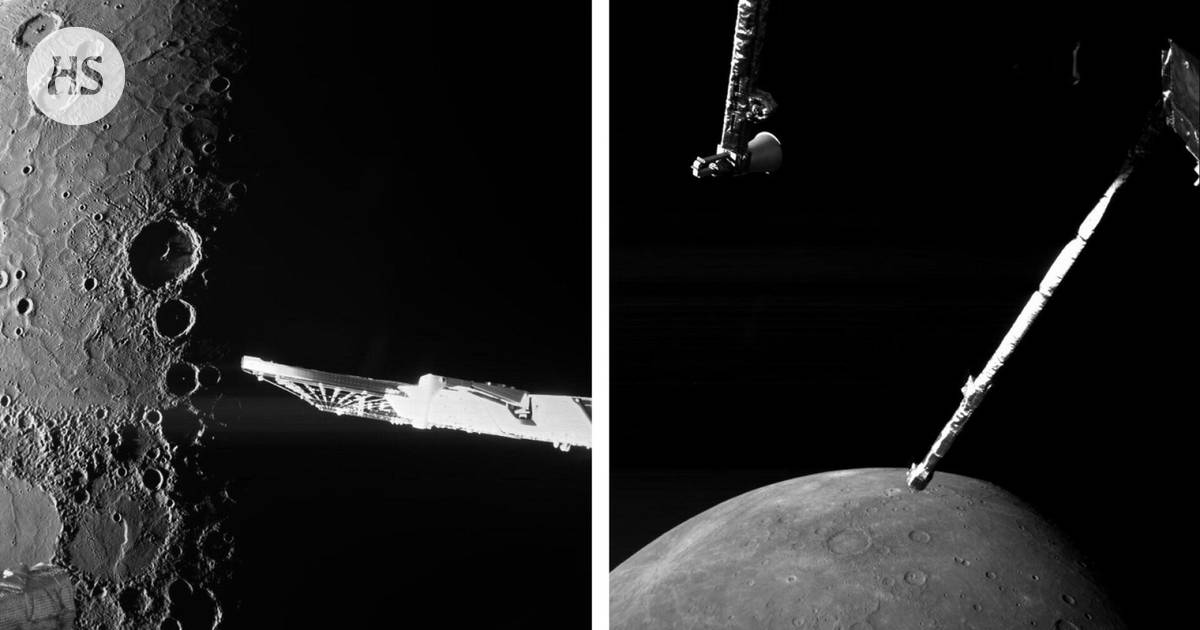Space|In 2026 or 2027, two satellites will be released from the probe of the European Space Agency ESA. They settle down to orbit the smallest planet in our solar system.
The summary is made by artificial intelligence and checked by a human.
The European Space Agency’s ESA probe Bepicolombo has passed Mercury at a distance of 295 kilometers.
Mercury is a small, hot, dark and dry rocky planet near the Sun.
The images revealed new details of the planet’s craters, which may even have ice at the bottom.
Planet Close-up pictures have been taken of Mercury.
European Space Agency ESA’s probe Bepicolombo passed the small planet at its closest, only 295 kilometers away.
The images revealed new details about the craters that dot the surface of the hot and dry planet.
“We will solve many mysteries in the coming weeks,” said the ESA researcher Geraint Jones at the press conference. He is in the group investigating Bepicolombo.
For example, it has been estimated that there are layers of ice inside and at the bottom of Mercury’s large craters. Now researchers are looking for evidence.
BepiColombo flew by Mercury already for the sixth and last time.
The probe’s two satellites will start orbiting and studying Mercury from the beginning of 2027. The sonar already set off in 2018.
The whole trip has been more or less braking, because the speed only threatens to accelerate when approaching the Sun. Its gravity is so strong.
Yes, new astronomers who study planets have received new data about a planet that is not very well known.
Mercury has been studied by two probes before Bepicolombo.
The US Mariner 10 got close to Mercury in 1974–1975. Another probe from the same country, Messenger, orbited the planet from 2011 to 2015.
So now it’s Bepicolombo’s turn.
Its main work will not start until late 2026 or early 2027. Then the Europeans’ and Japanese’s own satellites will be detached to orbit the rocky planet, he says website Science Alert.
The Europeans’ satellite maps the planet and also surveys it from below the surface.
The Japanese are investigating Mercury’s magnetic field and its interaction with the solar wind.
Mercury is dotted with a network of craters. It is not yet known if there is ice at the bottom of the craters. The picture was taken at the border between night and day.
Mercury is the smallest of the planets. Its diameter is barely larger than our own Moon, about 4,880 kilometers.
The hot rocky planet orbits the Sun at an average distance of only about 58 million kilometers. Its one cycle, or year, therefore lasts only 88 Earth days.
In the middle of the day, the temperature can rise to 430 degrees Celsius.
Before dawn, the cold can drop to minus 180 degrees Celsius at the bottom of the big craters at night. That’s why the craters may have permafrost.
Mercury has a large iron core at its core. The planet is very dark, because its surface reflects light poorly.
There is a lot of carbon in the crust and inside the planet. Some of it can even be in the form of a diamond layer.
Some phenomenon causes the planet to slowly shrink. It is not yet known which.
Bepicolombo was still braking on his sixth pass.
Solar it’s so hot nearby that the satellites need a heat shield for protection.
Neither satellite will land within 480 kilometers of the planet’s surface. Therefore, the images obtained now are the most accurate of Mercury in a long time, says the BBC.
